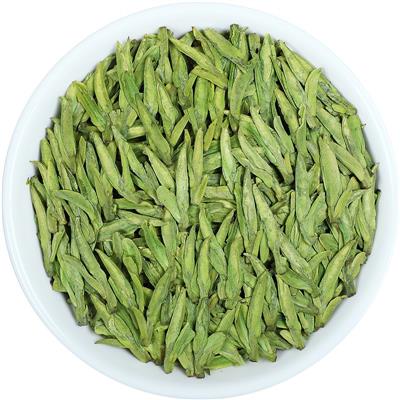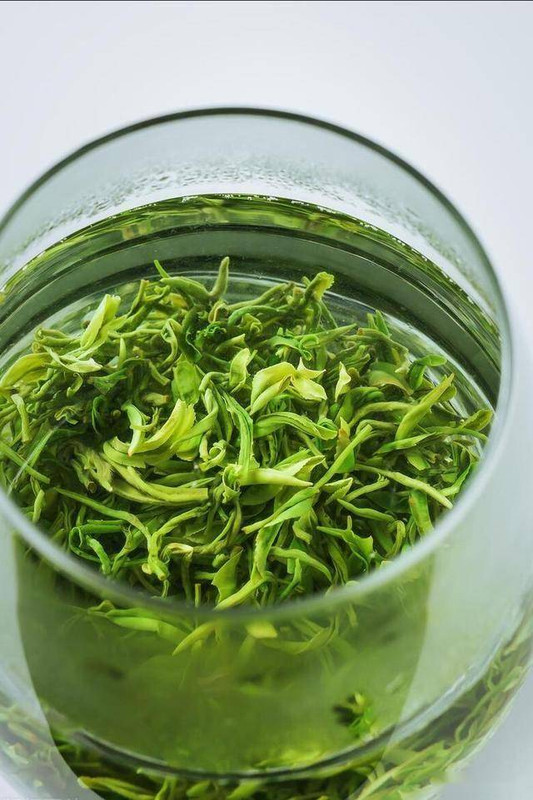China, the birthplace of tea culture, boasts a rich and diverse tradition of green tea production. Revered for its freshness, delicate flavors, and health benefits, Chinese green tea is categorized based on factors such as processing techniques, leaf shape, regional origin, and harvest time. This article explores the primary classification systems that define China’s green tea varieties.
1. Classification by Processing Method
The production of green tea involves a critical step called “杀青” (shā qīng), or “enzyme inactivation,” which halts oxidation to preserve the tea’s natural color and nutrients. Differences in this step lead to distinct categories:

- Steamed Green Tea (蒸青绿茶)
A traditional method where fresh leaves are briefly steamed. This technique, introduced to Japan and later forming the basis of Japanese matcha, is rare in modern China. A notable example is Enshi Yulu (恩施玉露) from Hubei, known for its bright color and oceanic aroma. - Pan-Fried Green Tea (炒青绿茶)
The most common method, where leaves are heated in iron woks or machines. This process enhances aroma and creates diverse shapes. Subcategories include:- Flat-shaped: Longjing (Dragon Well, 龙井) from Hangzhou, with its iconic flattened leaves and chestnut-like sweetness.
- Spiral-shaped: Biluochun (碧螺春) from Jiangsu, famed for its floral aroma and tightly coiled leaves resembling snails.
- Needle-shaped: Xinyang Maojian (信阳毛尖) from Henan, featuring slender, tender buds.
- Baked Green Tea (烘青绿茶)
Leaves are dried in ovens or baskets, resulting in a mellower flavor. Examples include Huangshan Maofeng (黄山毛峰) from Anhui, with its downy buds and orchid-like fragrance. - Sun-Dried Green Tea (晒青绿茶)
Rarely used for standalone green teas, this method is more common in raw pu-erh production.
2. Classification by Geographic Origin
China’s terroir—climate, soil, and elevation—shapes regional tea characteristics:
- West Lake Longjing (西湖龙井): Grown near Hangzhou’s West Lake, this “National Tea of China” has a protected designation of origin (PDO).
- Dongting Biluochun (洞庭碧螺春): Cultivated near Taihu Lake, its name translates to “Green Snail Spring,” inspired by its spiral shape.
- Lu’an Guapian (六安瓜片): Unique for using mature leaves without buds, this Anhui tea offers a robust, nutty profile.
Other renowned regional varieties include Taiping Houkui (太平猴魁) with its oversized leaves and Laoshan Green Tea (崂山绿茶) from Shandong’s coastal mountains.
3. Classification by Leaf Shape
The artistry of tea shaping is central to Chinese green tea aesthetics:
- Flat and Smooth: Longjing.
- Tightly Curled: Biluochun, Huading Yunwu (华顶云雾).
- Natural Fluffy: Anji White Tea (安吉白茶), a green tea despite its name, known for pale leaves and high amino acid content.
- Pressed Shapes: Though rare, some green teas are pressed into cakes or bricks for aging.
4. Classification by Harvest Time
- Pre-Qingming (明前茶): Plucked before the Qingming Festival (early April), these tender buds are the most prized, offering subtle sweetness.
- Guyu (谷雨茶): Harvested around the Grain Rain festival (mid-late April), these leaves yield a stronger, more aromatic brew.
- Late Spring & Summer Teas: Less expensive, with bolder, occasionally bitter notes.
Cultural and Modern Significance
Chinese green tea is not merely a beverage but a cultural symbol. From Lu Yu’s Classic of Tea to Zen Buddhist rituals, it has shaped art, philosophy, and daily life. Modern science continues to validate its health benefits, including antioxidant properties and metabolism enhancement.
Today, innovations like cold-brew green tea and flavored blends coexist with traditional brewing methods, ensuring its global appeal.
Conclusion
The classification of Chinese green tea reflects a harmony of nature, craftsmanship, and heritage. Whether sipping a cup of nutty Longjing or floral Biluochun, each variety tells a story of its origin and the hands that shaped it. For enthusiasts, exploring these categories offers a journey into the heart of China’s 5,000-year-old tea legacy.



